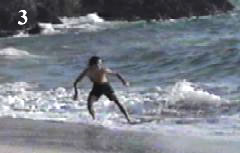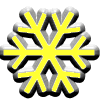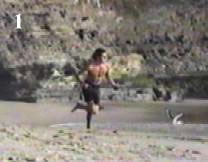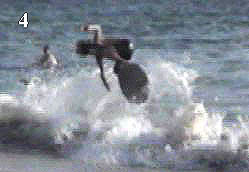Skimming
101
The
most important part of skimboarding is picking the right wave. Without good
wave judgment, even the best skimboarder will have problems. When first learning
to skim it is best to choose a flat beach like the one pictured. The best time
to begin running for a wave is right after the wave breaks. If the skimmer does
not run at the right time, they will have trouble once they get on their board.
(The pictured skimboarder is holding his board, it is hard to see because it
blends in with the background)
Once
the skimmer reaches the water or the wet sand, they throw down the board so
they can jump on it. This is the first physically challenging obstacle to beginners.
It is more difficult then it looks at first and many people don't stick with
skimboarding because this step is too hard. However, with persistence, and patience,
even the most uncoordinated person can learn to skimboard. Everyone takes a
'few' bruises learning how to get on the board.

Once
on the board, the skimmer must be equally careful not to fall off! They must
keep their weight centered over the board and keep the board pointed towards
the ocean. It is common to accelerate too quickly and lose control so it important
not to run too fast. The skimmer must also prepare for the wave. When the skimboard
meets the ocean, the riders weight must be on their back foot so the nose of
the board does not catch on the water. Notice how the pictured rider has all
of his weight on his back foot so he can glide up over the water instead of
plowing through it.
If
all of the previous steps are completed flawlessly, the rider might have the
opportunity to actually ride a wave. Depending on if the rider has enough speed,
balance and ability to turn, the rider can do various maneuvers while banking
off the wave and riding towards the shore. Unlike surfing, skimboarding allows
for the ability to spin, greatly increasing the possibilities.











